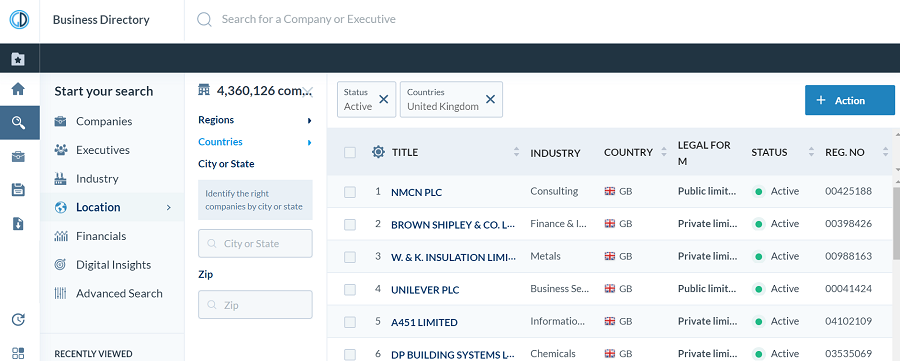From a simple fantasy to reality, artificial intelligence has come a long way. Teaching metal and silicone the ways the human brain works helped AI evolve in various directions to make much faster decisions. Remarkably, it has been well succeeding with that goal so far, among the plethora of other achievements.
Luckily, marketing was not an exception. Now, artificial intelligence increasingly contributes to improving the understanding of consumer behaviour, meeting the needs, predicting desires and demand on both short- and long-run and many more. Together with its development, artificial intelligence brings more opportunities and abilities to marketers’ lives, as well as clears their minds and schedules to let them focus on addressing challenges and creation of efficient campaigns. Read on to explore the ways to delegate marketers’ tasks to machines to boost achieved results and to apply artificial intelligence to best reach your audience, as well as if and when the usage thereof is appropriate.
Artificial Intelligence in its essence
Artificial Intelligence is a well-known notion that made several headlines throughout the years. Yet, the majority of people seem oblivious to its actual implementation either by feigning ignorance or manifesting fear of machines taking over. There are always two sides to technological advancements: one side is willing to jump the gun on testing and embedding innovating solutions, the other is more conservative in regards to adopting such disturbance in a well-established and working environment.
AI is just a surface notion. In fact, it is comprised of several deeper layers each encompassing different approaches and solutions. Shedding some light in this area will facilitate a better understanding of what is available from this technological upheaval. Generally, there are 4 notions often used interchangeably, yet referring to different vectors:
- Automation - pre-defined instructions aimed at lessening iterative tasks and data streaming: for example, bulk email sending based on a template. It has some tangential points with the “computer intelligence” bubble and sees implementation beside the other big names.
- Artificial Intelligence - algorithms which make up a virtual personality aimed at establishing a possible link between human input and digital output. One of the crucial development plans for this domain is a constant alteration of existing natural language processing methods. Interpreting the range of human emotions, tone, facial expressions, body posture or breathing is quite a challenging task, yet necessary towards the betterment of effective communication.
- Machine Learning - emphasizes “teaching” the machine akin to educating a child. Streams of data are continuously processed and rectifications of presented results are possible through inserting human-feedback. Therefore, constant iteration through trial and error forms the basis of more accurate future forecasts.
- Neural networks - is an imitation of the human brain functionality. The neuron is the basic cell of our nervous system and the key focus of such networks. This approach sometimes shares the name of “deep learning”, due to being the most advanced form of machine-based data manipulation.
Each field requires at least several papers to be remotely understood, but the aim of this article is to be an enlightenment in this advance of digital instruments.
Going about possibilities
Getting started with implementing AI into your line of work is more of a perseverance test of seeing it through than a difficult hindrance. There are two ways of achieving a relatively seamless experience: outsourcing the work to AI-oriented tools and businesses or setting up a specialized department in your own enterprise.

The first option is pretty self-explanatory. You scour the web for a company whose tool aligns with what you are trying to accomplish. The main drawback here (now) is reduced flexibility as the product itself is focused and trained on one particular strategy. The second option requires quite a few resources. Such a task is not simply finished overnight and requires clearly defined paths, as well as certain specialized employees.
One-to-one marketing - the issue
In a perfect world, advertising would be tailored to fit every nook and cranny of a customer’s needs. Alas, ours is not. Certain experts support the idea that computer databases will bring forth a closer relationship between customers and businesses to a level similar to a village community. General stores would be able to accommodate customers and treat their desideratum: a truly exciting and enthralling theory for marketers and computer engineers alike, but it started on paper and is mostly still an intent.
Mass marketing is nowhere near feasible enough to distinguish people. Individuals amidst a conglomerate become just a simple numerical statistic. What is left of one-of-the-kind characteristics are simple attributes spanning across a group of people. By trying to go in depth, businesses are supposed to take on the challenge of processing old, new and nebulous metrics: visitors, stickiness, conversion, bounce rate, path, journey, view-through, abandonment, attribution and social media acceleration ratio as well as additional indicators each with their own specifics. It becomes an unfathomable mess to keep track of. That is why sometimes marketers trust their gut and play it by ear, which more often than not comes off as tawdry.

Be it B2B or B2C, clients have been increasingly nurtured to the phase of having their expectations set high. An improper level of personalisation or total lack of it drives to an almost ideal ignorance from your audience, no matter how good and valuable your product is. In the end, it may result in losing all your leads to competitors. Artificial intelligence is there to allow marketers to dig so deep that they even discover insights at the level of personas, thus growing their understanding of what messages, to whom and when should be delivered. With microscopic customer segmentation, marketers can define both current and future needs, concentrate on them, and thusly obtain more opportunities for the foundation of long-lasting business relationships.
AI segmentation, unlike the usual perception of the term, does not just result in clustering people with similar features and behaviours. It may track the journey of every customer through the marketing funnel, map it, help to understand his or her actions at each stage, all in a way that would allow to further consider that person as the representative of his/her lookalike audience gaining the ability to anticipate further actions at any of the sales funnel stages.
Trailing customers’ moves through the marketing funnel delivers the benefit of gaining the possibilities for dynamic segmentation.
Making use of opportunities
Have AI applications been introduced recently? Yes, kind of. Data collection, on the other hand, has been for a while with AI being a byproduct. Almost all services nowadays collect information, albeit anonymously, sometimes even on a ‘creepy level’. Your mobile device is constantly listening for the key-phrase (“Ok/Hey [assistant name]”). But in order to understand when it is supposed to activate the service, it must process language continuously. Such measures bring controversy onto the table. Another example is targeted ads based on keywords picked up from verbal interactions.
Before diving into actual areas primed for AI usage, it is important to note that this technique is entirely data-driven. No matters of ethic origins will be touched upon regarding data acquisition. This document elaborates on practical applications as well as how and why, leaving proper data management to be upheld discreetly.
First and foremost - customer profiling
Akin to how browsers store ‘cookies’ to track your presence online, customer profiling defines thought-out segments which groups people displaying similar interests alongside a vector of other collected data chosen to be as a defining term. This method goes both ways as it allows businesses to tailor specific products and customers to receive a detailed spotlight.

However, computers are set out to do it at a faster and increased rate as well as achieve new heights in segmentations. Leaving out the fact of processing speed and prowess, machine learning delivers predefined or generated “buckets” based on revenue contingency. Moreover, with enough data models, several perspectives open up: automated segment identification or new behavioural characteristics. Manipulating buckets of your loyal customers is indeed a fine choice, but there is no need to stop there. It is time to work out what exactly they have in common and go off to find like-minded people.
Having an effective measure of associating based on intrinsic values pairs nicely with the next option. There is nothing more perplexing for a marketing employee than giving a cold call. It is still done in this day even when everything else just is not cutting it.
Lead scoring
There are thousands of threads available, yet the team needs to know exactly whom to reach out to. Manually, this is a task better left for seasoned veterans.
Many variables come into play when targeting a specific group and there are a select few opportunities to strike at the right moment. Current methods rely on a tried and tested weight system inferring that some aspects are heavier than others. For example, viewing a video and requesting a demo would score differently.
As per usual, a multitude of variables calls for more processing power, which can be achieved through different machine learning techniques. Predictive lead scoring sounds nice on paper, but what exactly is it doing? The core system is based on the original profiling criteria - weighted lead attributes - for the first generation, whilst the second one is enhanced with a regression measurement in order to forge a ranking list.
The above-mentioned approach is for already existing data, so there must be a solution when working with external sources thereof. Indeed, by streaming high amounts of data, around 50 billion signals for 18 million businesses in the US only (J. Sterne), which represent places that B2B buyers frequent, one can comb a structure to search for deviations and identify patterns. A slow start is compensated by a strong detailed list of instructions which are to be followed for maximum efficiency.
It is possible to derive critical information such as: which people to contact first, what value to present to a certain account, which engagement tactics and content will work best on a predicted buying stage of a prospect.
Competitive Analysis
Analysing the competition is a necessity which allows for greater flexibility and customer retention. Downplaying the need to oversee where the “ball” is headed often is do or die for enterprises. The machine could compile every company’s data into a cloud then cluster it accordingly. Such organized segmentation could make for an easier understanding of the whole ecosystem and provide useful insights for investment or innovation plans. For a more accurate representation, additional curating, filtering and aggregation options must be included.
An indirect way of assessing your competitive ranking is through image recognition software. Social media is full of photos, which at a closer look can provide useful information. One might attribute the frequency of a logo appearing in these images to the success of a brand.
Optimised matching
Very useful ads, to a degree that they sometimes creep you out, are of no big surprise lately. Be it B2C or B2B, users are well accustomed to increasingly relevant ads. The role of artificial intelligence for marketers here does not just come down to brilliant selection of the targeted audience, but to matching displayed ads or search results with the queries. Tech savviness is on the rise too, together with the exploitation of search engines. AI solutions are there to figure out the search patterns to optimise marketers’ efforts to understand the key areas to focus, on the one hand, and smarter match demand and supply, on the other hand.
Social Media Monitoring
It is quite the hassle to monitor all the noise going on a social media platform, yet you must not overlook this channel due to its influence. Valuable information can be extrapolated from the vocal minority, which in most cases are loyal customers, and be applied to other audiences. Today’s public opinion is stretched over a series of platforms, making it even harder to keep the finger on the pulse, and quite impossible to do so at low costs.

To analyse a single review or tweet, an employee would have to spend around 1-2 minutes checking out the account and that is not taking into account tracking their history of posts. On the other hand, a computer can process vast streams of data instantly through a plethora of APIs. The only downside is that it is yet hard for a machine to discern the sentiment presented in a line of text. There are various ways to present a comment, and the human language may never cease to amaze with ingenious remarks. E.g., a word like ‘sick!’ might not always get labelled as good.
With Natural Language Processing and Automation in the trunk as well as a sprinkle of AI magic, social media is ripe for the taking. Given enough data and context, there is less and less need for a supervisor.
Customer support
According to Gartner, due 2020, 75% of customer service interactions will be managed without the presence of a human. The same source states that 30% of B2B companies will apply AI to enhance at least one of their fundamental sales processes. While these are indeed some exciting statements, the rise of chatbots is unmissable. Whether you use it to connect to a salesperson or have frequently asked questions answered, a chatbot has its uses. A definitive benefit is the 24-hour service uptime and instantaneous response that drive forward the need for such virtual assistant. Moreover, the low service cost is surely appealing to every enterprise out there.
Content handling
One of the harder challenges marketers face is the demand for highly tailored and specific handling of content. It would seem as unappealing messages are jumped over thus bringing everything else down with them. There is a need to reach new heights of personalisation before new channels of advertising make their way into the market.
No matter which platform you are using, the words need to deliver value. This is why AI is on its way to fill the gaps of human error through better phrasing. After all, countless past recordings and various inferences should help to refine a more relevant connection.
Enriching AI with Global Database
As you may have noticed AI guzzles down on data just like a V12 engine gobbles on fuel. To assure a good performance, it is important to feed quality unleaded information into the system. Developing another algorithm to check for data credibility would just set back the whole process. B2B marketing has different flavours and requires appropriate procedures.

Global Database prides itself on high data accuracy and frequent update policy so there is no delay in powering up an artificial network. Thanks to easy to implement API services, corporate bulk data streams are ever flowing, allowing as well for additional notifications regarding changes of highest interest in the form of alarms.
Through countless records, segmentation opportunities have made themselves available and ripe for picking. You can insert a considerable amount of pre-generated filtered lists and start extrapolating from there. Due to the first-generation being somewhat sliced and diced, you are already ahead of the game.
If you are perhaps manufacturing an AI system based on a CRM, you will be happy to hear that we have got you covered even on that front. A simple button will export all selected data to the software of your choosing so that you may focus on the tasks at hand. Till the Artificial Wheel starts to spin, be at ease with our custom alarm tools. Adjust your actions at a moment’s notice and forget about events slipping past your eye. Start your AI experience with a tested and approved data provider like Global Database.
To sum up...
AI opportunities have not yet fully gained the trust to deserve its permanent seat among traditional marketing methods. However, there is progress at a steady pace. What started out as automated tasks with the intention of lessening chores, has slowly, but surely, made its way into an auto-generated era. If are starting your AI path, consider implementing Global Database into your adventure beyond.